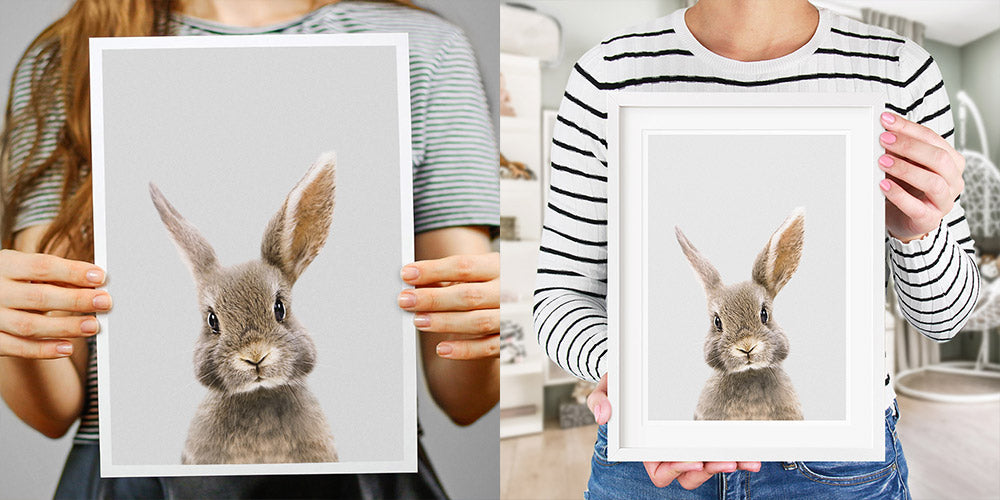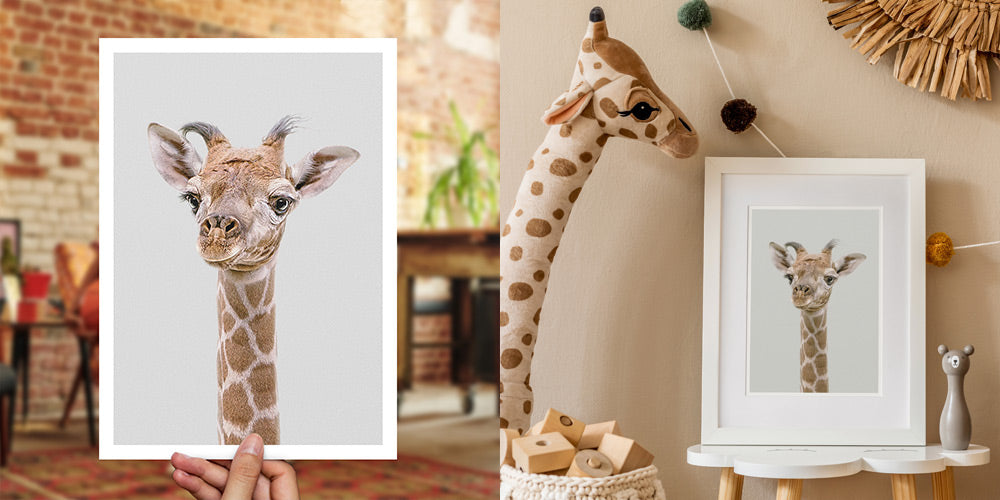How To Frame Art Prints
Don't worry, framing is easy when you know how. We've put together this brief guide for you, which will answer the most common framing questions and give you a solid foundation of what to keep in mind...
Framing Art Prints
We use standard, popular paper sizes for our artwork... A5, A4 and A3 (also called ISO format), so there's plenty of choice out there when it comes to framing.
As artists, we actually prefer to sell our artwork unframed. Not only is it much more cost-effective to do the framing at the customer end (to save on high shipping weight and insurance costs), but it also removes the (very restrictive) style and colour limitations of buying pre-framed artwork. There are lots of styling options available to you, from hundreds of different frame manufacturers...
*note: The metric 'A' paper format is largely used in the UK and across Europe. Whereas, in the USA, they tend to use imperial sizes for paper (measured in inches).
- A5 Paper size - 148 x 210mm
- A4 Paper size - 210 x 297mm
- A3 Paper size - 297 x 420 mm

What kind of frames are available?
There are two popular 'off the shelf' styles of framing that you can easily find online or in local home stores... 'Poster frames' and 'Mounted frames'
Let's take a closer look at each style...
1. Poster Frames
A very popular and somewhat more modern choice. Poster style frames are much easier to use (than mounted frames) as the frame size simply matches the paper size exactly. Got an A4 print? Just look for an A4 poster frame and it will drop right in.
*note: Our prints often include a small white border, which gives a much more pleasing transition from the edge of poster style frames. A kind of 'built-in' mounted effect.

2. Mounted Frames
This is a more traditional style of framing, but still very popular. The card 'mounts' can generally extend the life of prints as their purpose is to raise any glass or Perspex, to prevent it from touching the surface of the artwork directly.
Why would that matter? Well, sometimes (in certain moisture rich environments) condensation can form between the glass/Perspex and the surface of the artwork, causing possible damage over time (usually many years).

So how do I choose the right size?
There are two sizes to consider when framing mounted art prints and this is where it can sometimes get a little confusing. But don't worry, it's really quite easy to understand once you know the differences :
1. There's the 'outer frame size', which is usually made of wood, metal or plastic. This outer size can vary and can be measured in metric or imperial sizes (centimetres or inches).
2. Then there's the 'inner picture size', which is the most important measurement. This has to be exactly for the chosen paper size. This makes sure that the cut-out 'window' will fit the size of the print paper correctly (even on all edges).
*note: If you try to put metric paper (an A4 size print for example) into an imperial size mount (with say an 8x12" inner picture size), you will run into problems very quickly as they're different 'aspect ratios'. What that means, is that the edges won't match up correctly and they'll look very odd, usually with gaps showing or with parts of the artwork hidden from view.

What to search for when looking for frames
Because we use popular paper sizes for our artwork, there's lots of choice for framing, both online and in local home stores. When searching for your perfect frame, some popular online searches might be:
- 'Frame for A4 picture'
- 'Frame for A3 image'
- 'Picture frame for A5 art print'
- 'Poster frame for A4 print'

Where to buy art print frames?
We don't have any links with framing companies, so can't point you in the direction of an exact supplier. But, now you know what to look for, you can easily find many examples of frames, in a multitude of different styles and colours. You can find them in popular high street home stores and especially online (with a quick Google search), or you can search any of the large marketplaces such as eBay or Amazon.
*note: There are also online services that can make custom frames based on your personal choices of sizes, colours, materials etc, though these services tend to be a little more expensive than pre-made, 'off the shelf' frame options.
*another note: Don't forget, once you own a frame and you know how to frame art prints, you can change the artwork inside them whenever you feel like it! It always amazes us, how swapping a new piece of art ( in the same frame) can completely transform the atmosphere in a room.
Conclusion
Framing certainly presents a 'cost vs convenience' dilemma when buying from artists online, but the substantial savings that can be made (by framing at the customer end) far outweigh the convenience aspect of an order.
Most of our customers make multiple purchases and buying pre-framed art (although more convenient) quickly adds (substantial) 'hidden' costs, due to much heavier parcel costs and transit insurances.
Once you know what to look for, framing any artwork yourself is pretty straight-forward and rewarding.
Of course, if you have any questions at all, please don't ever hesitate to get in touch, we're always here and happy to help.

